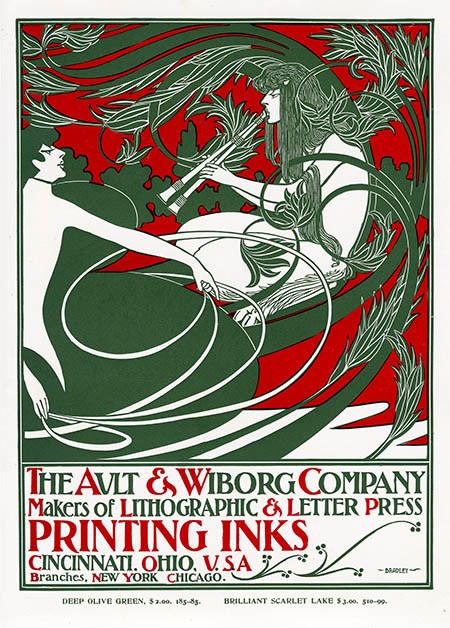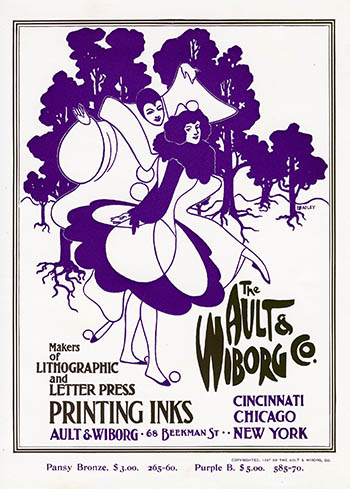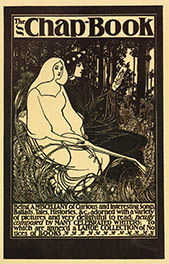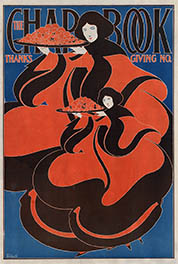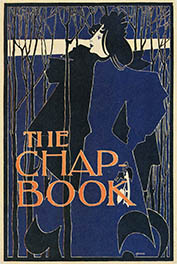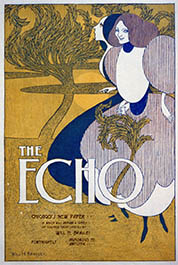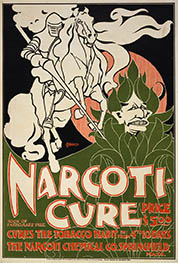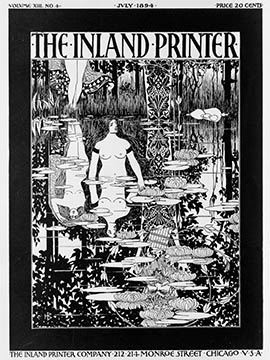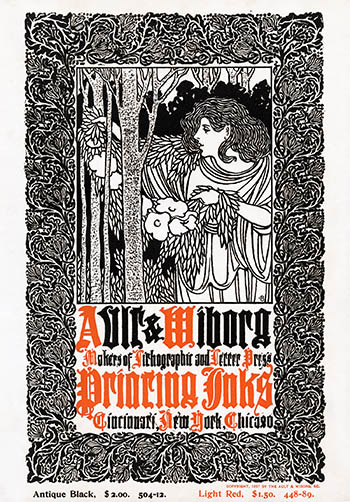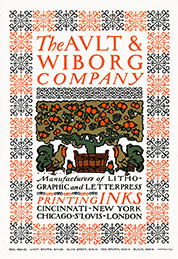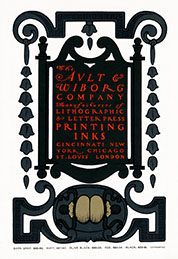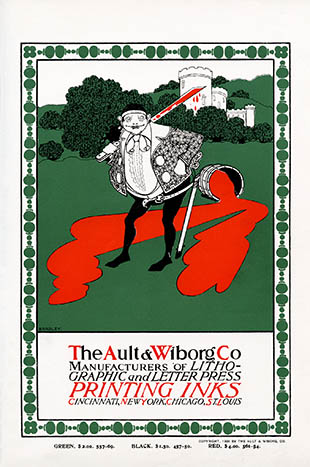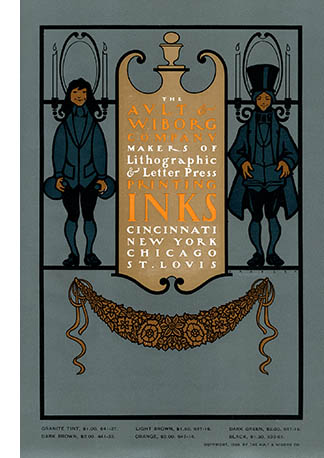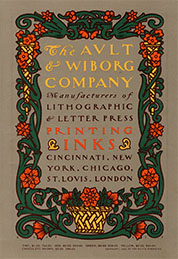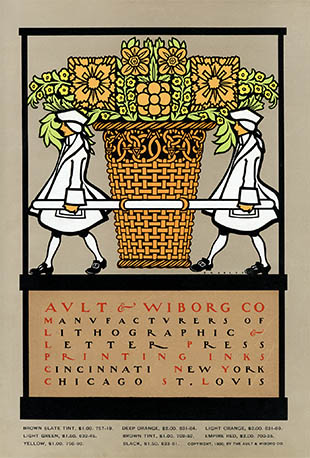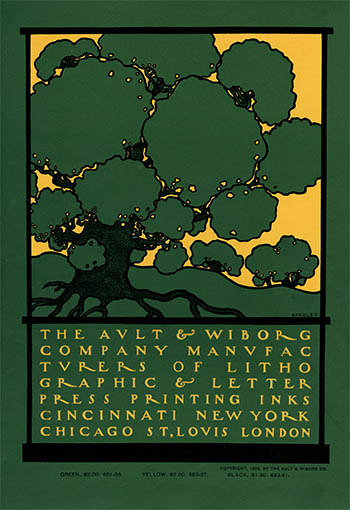67
Ault & Wiborg
Bradley and Art Nouveau in America
William Henry Bradley was born in Boston on 10 July 1868. As a child he received his only formal art training from his father, a cartoonist for the Daily Item. After his father died the family moved to Chicago where became a printer's devil2 for the Iron Agitator newspaper then an engraving apprentice at Rand-McNally and finally a typographer at Knight & Leonard. In 1889 he became a freelance designer.3
The Art Nouveau poster, which had spread from France throughout Western Europe, was first introduced to America though the work of Eugene Grasset and Aubrey Beardsley. Bradley, who had apparently been paying attention to these developments, designed the Beardsley-influenced The Twins for the May 1894 cover of Stone and Kimball’s short-lived The Chap-Book. It is now widely credited as the first American Art Nouveau poster. Here are several of Bradley’s promotional posters for 1895 issues (then known as numbers):
His Chap-Book covers were followed by, among others, commissions for The Echo, Colliers, Overman Wheel, Narcoti-Cure4 and The Inland Printer.
Bradley’s work for The Inland Printer would turn out to be some of the most important graphic design of the late 19th century. Largely on the strength of his work the magazine became the first to feature different covers with each issue. The magazine was, perhaps more than any other source, responsible for popularizing Art Nouveau in America.
In 1895 he moved back to Boston where he founded the Wayside Press. Between 1896–1898 he published his own arts and literary monthly Will Bradley: His Book. Eventually the stress of running his own private press proved too much and he sold it to the University Press, Cambridge in 1898.
Initially Bradley’s work was derided as just “An American Beardsley” but he was also influenced by Charles Ricketts, Walter Crane, William Morris, Eugène Grasset and, after a visit to the Boston Public Library, colonial American printing.
Around 1895 he began a series of commissions for the Cincinnati-based ink company Ault & Wiborg (which we’ll discuss at length in part II). The full color lithographs, which were printed with the inks they were advertising, ran in several trade publications. The 20 or so posters represent the entire range of Bradley's influences and serve as a rather useful overview of the American Art Nouveau and Art and Crafts poster.
After 1900 Bradley began regular work for Colliers writing about architecture and interior design. In 1916 He became the art director for the Hearst Corporation. He retired in 1931 and died in California in 1962.
It would be nearly impossible to catalog his entire output. Over his career He designed magazine and book covers, advertising posters, typefaces, even houses and home interiors. He edited his own journal and wrote extensively in both periodicals and books. He even did film work. The Saturday Evening Post called him the “Dean of American Designers.”
1. The Ault & Wiborg images are scans done by yours truly from a copy of the 1902 Ault & Wiborg Poster Album. The remaining images are screen caps from Lawrence University’s wonderful Art of the Poster 1880–1918 or the LOC’s Prints and Photographs division.
2. A printer’s devil (a great job title) was a gofer and apprentice in the print shop. The name comes from the fact that the apprentice would end the day mostly covered in black ink.
3. There are more than a few books about Bradley and his art. Here are two: Hornung, Clarence (ed). Will Bradley: His Graphic Art. New York: Dover, 1974, or Bambace, Anthony, Will H. Bradley: His Work, A Bibliographical Guide. New Castle, Delaware: Oak Knoll Press, 1995 (this came with an original issue of Bradley: His Book, so good luck affording that). For an online reference see Martin Lindsay’s excellent WillBradley.com.
4. Narcoti-Cure, a “a perfectly harmless vegetable compound, which has in its five months cured many thousands of tobacco slaves” was sold for the rather exorbitant price of 5.00 USD (about 125 USD today). The 3-color poster, however, was available for only 4 cents in stamps.
20 Jun 2010, updated 16 Oct 2011 ‧ Design
